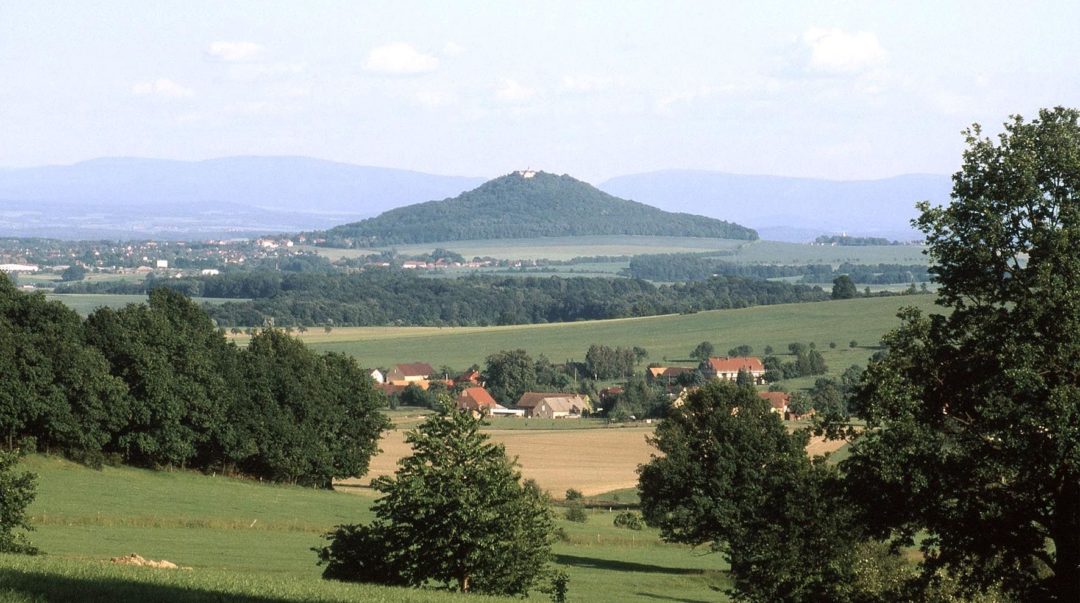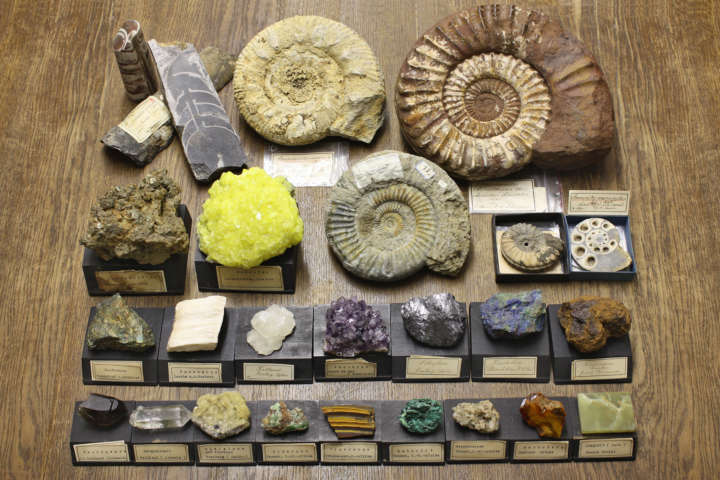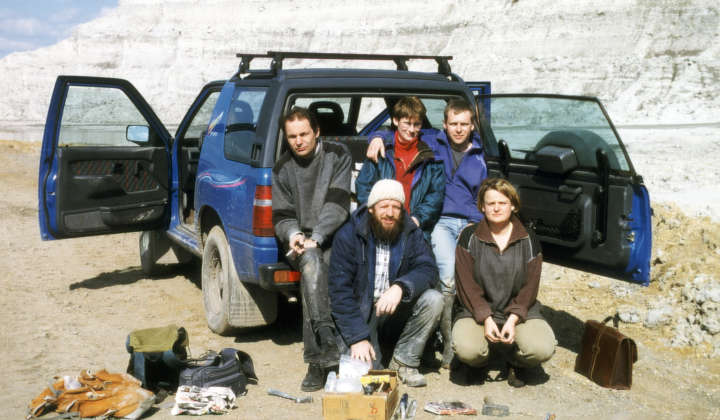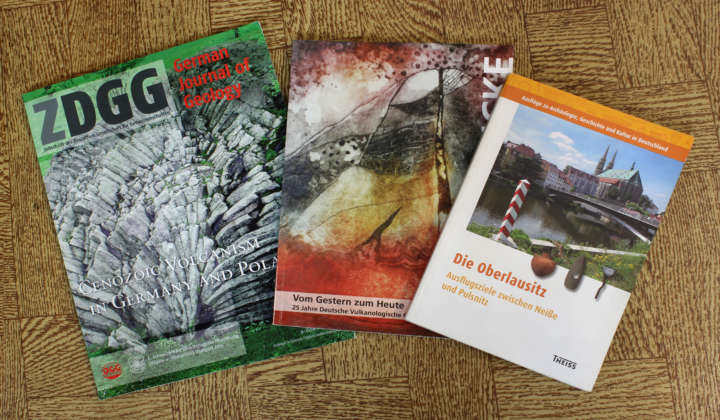
Volcanology
The neovolcanoes in East Saxony (D), North Bohemia (CZ) and Lower Silesia (PL) created the Lausitz volcanic field, as a part of the Cenozoic Central European Volcano Province (CEVP). The volcanic rocks are characterized by a bimodal composition (alkali basalts and phonolite/trachyte). The Lausitz volcanic field is situated in the triangle in between Germany, Czech Republic and Poland. This marginal position is the reason for the rare scientific investigations since World War II. Recent volcanological investigations and geological mapping provide new insights in the processes of intracontinental volcanism. Furthermore, petrogenetic assumptions about the lavas and magmatic sources are possible and the study of the ancient volcano edifices gives a powerful tool for the reconstruction of the landscape evolution for the last 30 Million years.

Heavy minerals from volcanic rocks
Heavy minerals, such as spinel, corundum, zircon, garnet (pyrope), rutile and ilmenite can be observed in volcanic rocks in different content. These, mostly rare mineral inclusions in alkaline basaltic and phonolitic rocks can give information about the melt origin, the magma evolution by the ascent and unknown petrogenetic connections. Therefore mineralchemical and isotopic analysis are taking from selected heavy minerals, such as zircon or pyroxene.
Zircon typology
Magma genetic connections for different isolated rock complexes can give the multifarious crystal shapes of zircons, but also direct petrogenetic information to the parental magma (zircon typological method after PUPIN). In one sample are often observed zircon crystals with different morphologic features, so-called zircon subpopulations, what indicates different sources. This connection is important for ongoing investigations, such as mineralchemistry and isotopy. For the study on zircon concentrates carried out from placers near outcrops of ancient volcanoes and on in situ zircons from alkaline basaltic or phonolitic rocks.
Zircons associated with alkaline basaltic rocks (“Basalt zircons”)
The adjacent image shows “basalt zircons” in gem stone quality from the Oberlausitz (Saxony, East Germany). Such zircon crystals are known from Germany only from alluvial deposits, such as placers or residual rocks, for example from the Sächsische Schweiz Mts., the Oberpfalz, Vogtland or Eifel. The insitu validation of “basalt zircons” from alkaline basaltic volcanic rocks was able to prove in the Oberlausitz at the first time worldwide.
Zircon crystals are important information providers for the earth history, because of their high stability and the property to incorporate trace elements in the crystal lattice. The very rare, but big “basalt zircons” (size ca. 1–3 mm) can give information to melt and rock-forming processes in the Earth’s mantle
Current projects
- Volcanological investigations and geological mapping for Cenozoic Volcanoes in East Saxony (D), North Bohemia (CZ) and Lower Silesia (PL)
- Mineralchemical and isotopic investigations on heavy minerals and associated volcanites in East Saxony (DFG-grant „Zirkon-Megakristalle in Alkalibasalten und Phonolithen am Beispiel des Lausitzer Vulkanfeldes“ together with Dr. Axel Gerdes, University Frankfurt and Dr. Wolfgang Seifert GeoForschungsZentrum Potsdam)
- Typological investigations on zircon crystals from Cenozoic alkaline basaltic and phonolitic rocks from East Saxony, North Bohemia and Oberpfalz (Upper Palatinate)
- Reconstruction of the landscape evolution in East Saxony and adjusted areas since Tertiary (Lausitz massif, Elbe zone) as a case study for the mid-range mountains in Central Europe
Externally founded projects
April 2011 to March 2012:
„Zircon megacrysts in alkaline volcanic rocks – an example from the Lausitz Volcano Field“
Applicants: Dr. Olaf Tietz (Senckenberg Museum of Natural History Görlitz) together with Dr. Axel Gerdes (University of Frankfurt) and Dr. Wolfgang Seifert (GFZ Potsdam). Supported by DFG with € 20,000.





